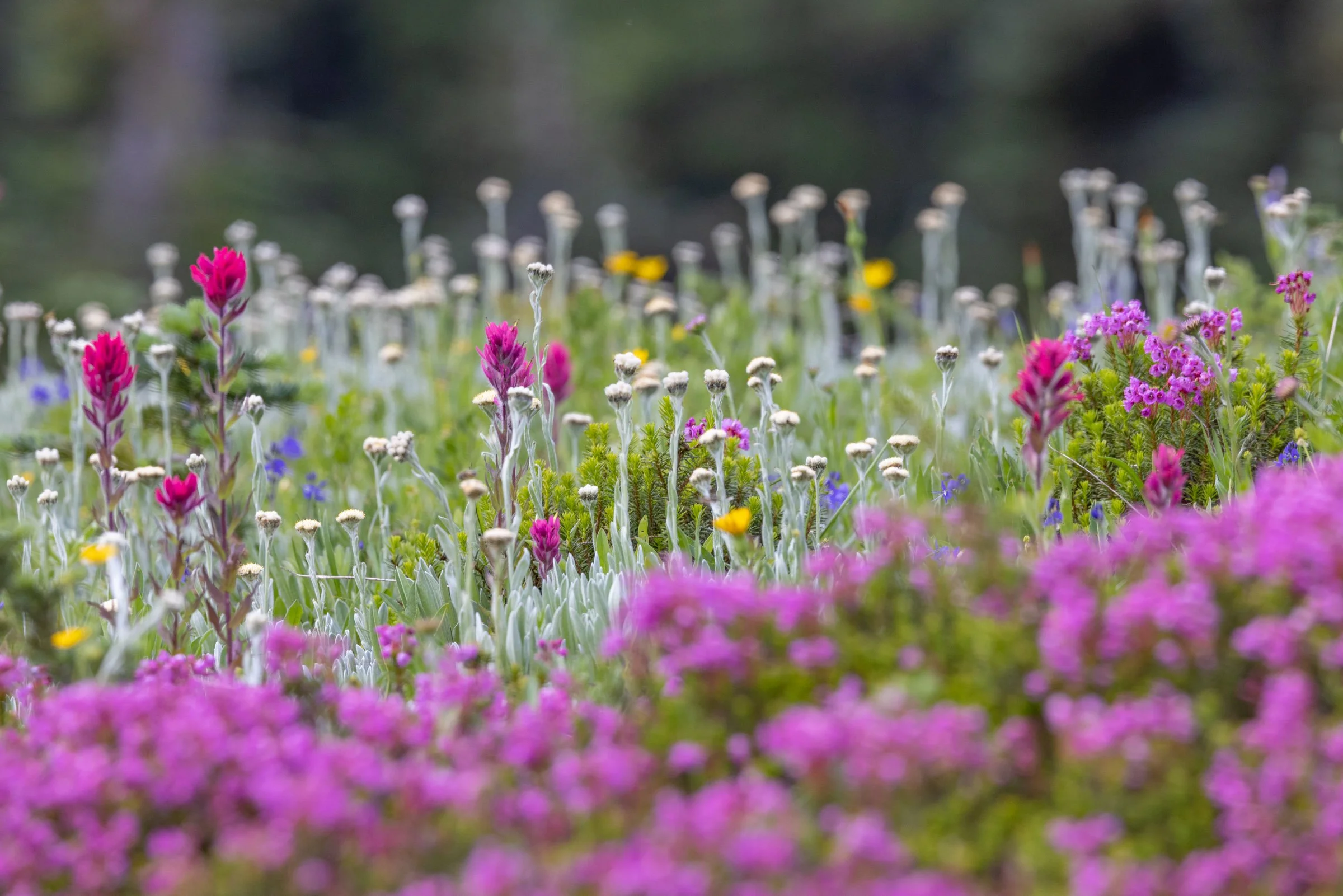Critter of the Month: Mountain Butterflies
Dazzling and dramatic, yet so delicate, butterflies are a fitting symbol of the fragility of nature. Dozens of butterfly species glide through Washington’s Mount Rainier National Park each summer when meadows explode in a spectacular riot of wildflowers, drawing millions of visitors from around the world.
The Cascades Butterfly Project
But the long-term future of the park’s meadows is uncertain as the impacts of climate change bear down on this sensitive ecosystem. Because of the close relationship between butterflies and the meadow plants that nurture caterpillars and provide nectar to nourish adults, National Park Service scientists are keeping tabs on their populations in the park through the Cascades Butterfly Project.
Typically, sub-alpine meadows experience long winters with deep snowpack and short, mild summers. The slowly melting snow favors meadow plants, keeping brush and trees from establishing and providing moisture to sustain flowers that spring up quickly when the ground warms. But, if predictions by climate scientists prove correct, by 2050 average temperatures in the Pacific Northwest will climb by six degrees, creating a future of lower snowpacks and longer, drier growing seasons that make meadows vulnerable to encroachment by trees and brush. These changes are already become apparent in some areas, with bushes replacing meadow plants at the Park’s Paradise location.
Will climate change impact butterflies?
Cascade Butterfly Project scientists want to learn if the changing landscape will also transform the dynamics of butterfly populations. The study’s first step has been to create an inventory of the types of butterflies currently winging through the meadows to form a baseline for judging future changes. Volunteers conduct summer surveys on trails at ten locations in Mount Rainier and North Cascades National Parks and in adjacent National Forests. They record butterfly species and numbers and document the timing of plant flowering. It’s crucial that butterflies emerge as their host plants offer new, succulent leaves for caterpillars and high energy nectar for egg-laying adults. Data collected over time will document if this synchrony is disrupted by environmental changes.
Volunteers are the Heart of the Project
It's no easy feat surveying butterflies across the park's many sub-alpine meadows, so the Cascades Butterfly Project engages a committed corps of volunteers to hit the trail for science armed with nets, ID guides, and passion for protecting their park. Volunteers catch the butterflies that fly within their trail-side survey grids to confirm IDs. Many of the species have very similar markings and can only be distinguished with an up-close look. With nets swinging, the butterfly hunters chase down their flitting targets, transferring successful captures into clear plastic jars for examination. The project is strictly catch-and-release. Once identified, butterflies are released to continue their meadow meanderings.
Of the 155 species of butterflies in Washington, 57 have been documented in the study so far.
Anna’s Blue
Butterfly Likes: Sipping on the nectar of sub-alpine meadow plants including, Cascade aster, sub-alpine daisy, broadleaf lupine, and magenta paintbrush. These meals of sugar keep butterflies flitting as they mate and lay eggs during their brief weeks on the wing.
Butterfly Dislikes: Being netted! Butterflies are fast and fly unpredictably. Many of the butterflies in our survey sites remain unidentified, flying through as a colorful blur before disappearing into the distance.
Butterfly Super Power: Mountain butterflies overwinter buried beneath enormous drifts of snow, either as eggs or pupae. It’s incredible that they can survive in suspended animation under some of North America’s most extreme conditions.
Thanks to the many volunteers who spend hundreds of hours each summer gathering data to help elevate understanding and prevention of climate-induced threats to Washington’s wild treasures.
You can learn more about the Cascades Butterfly Project on the National Park Service website.










